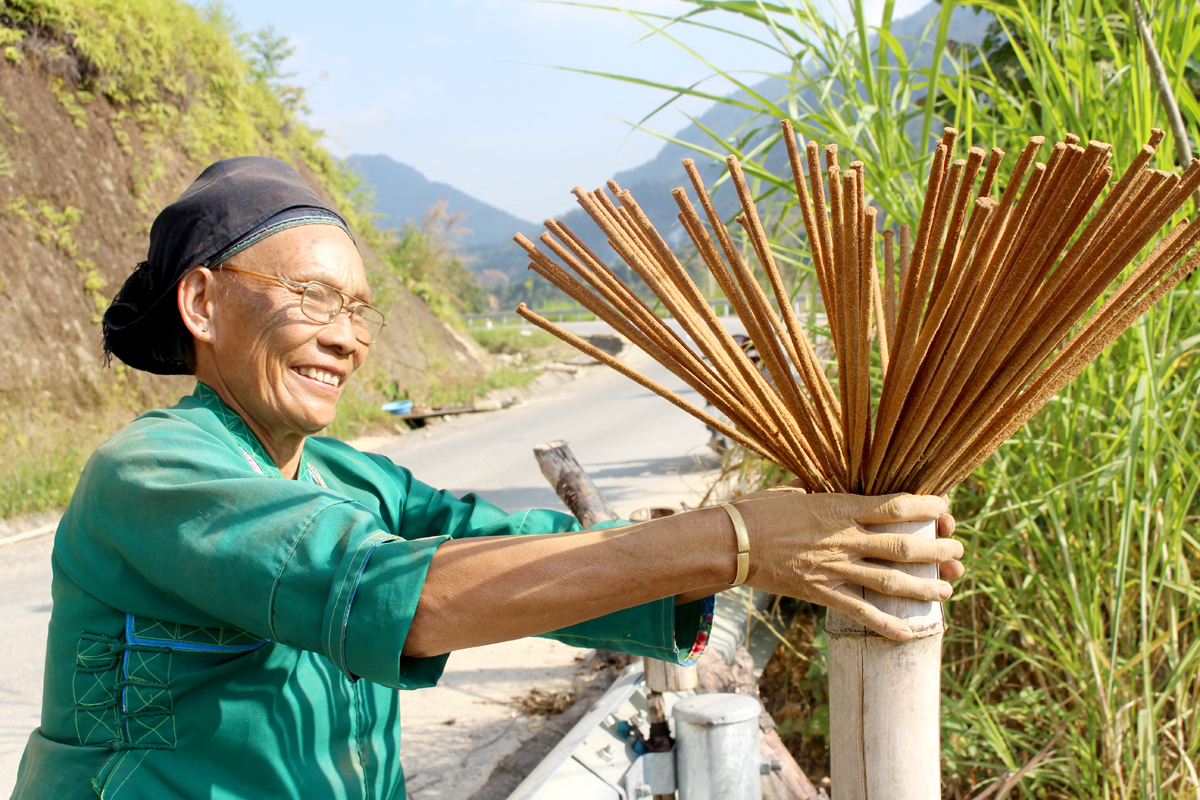14:47, 09/12/2024
BHG - When the spring and Tet (Lunar New Year) comes, alongside green ‘banh chung’ (square glutinous rice cake)) and red calligraphy scrolls, fragrant incense sticks are an indispensable part of family altars. Hidden within the warm and aromatic scent of incense is not only the filial piety and gratitude of descendants toward their ancestors but also unique stories about the cultural traditions of the nation.
Incense has become an integral part of Vietnamese cultural, spiritual, and religious life, symbolising a sacred and familiar tradition. Especially during Tet, incense sticks are indispensable in every Vietnamese household. This has led to the preservation of the craft of incense-making by the Nung ethnic minority group, who live at the foot of Tay Con Linh Mountain in Hoang Su Phi District, sustaining it to this day.
 |
| With the belief that incense-making not only provides income but also carries traditional and spiritual values, Lu Thi Rui, 63, from Ta Leng 7 Village, Tung San Commune, has been dedicated to this craft for over 30 years. |
 |
| To make incense, the ‘mai’ tree is cut into sections about 40 cm long and then split into fine incense sticks. The tree must be about one year old—not too mature nor too young. |
 |
| Once split into evenly-sized sticks, they are left out to dry. |
 |
| The Nung people's incense materials here are quite unique. They often climb Tay Con Linh Mountain to collect powdered forest cinnamon bark, which is ground finely and mixed with various herbs and forest flowers. |
 |
| During the rolling process, incense makers dip the incense stick into a bucket of water, then roll it back and forth over a layer of pre-mixed dry powder. They quickly dip it into the water again and continue rolling until the incense stick meets the standard. This step is crucial as it determines both the appearance and quality of the incense. |
 |
| For the incense to have the best fragrance, the key lies in the powder-mixing formula, according to the residents of Ta Leng 7 Village, Tung San Commune. If the powder proportions are not balanced, the incense sticks will not adhere properly, may fall apart, or will lack the distinctive herbal aroma. |
 |
| Rui said: "Every year, after the busy farming season, I take advantage of my free time to make incense. This time of year, with the Lunar New Year approaching, consumer demand increases significantly. On average, incense-making brings my family an income of about 20 million VND per year". |
 |
| Rui said: "Every year, after the busy farming season, I take advantage of my free time to make incense. This time of year, with the Lunar New Year approaching, consumer demand increases significantly. On average, incense-making brings my family an income of about 20 million VND per year". |
 |
| Drying the incense is the most time-consuming step. If the weather is sunny, it takes just half a day to dry; however, in overcast or rainy weather, it may take up to three days. |
 |
| Lighting fragrant incense on the ancestral altar is an indispensable cultural tradition for Vietnamese people. This is also why the residents of Ta Leng 7 Village, Tung San Commune remain committed to the craft of incense-making, cherishing and preserving this traditional art form. |
NGUYEN YEM















READER COMMENTS